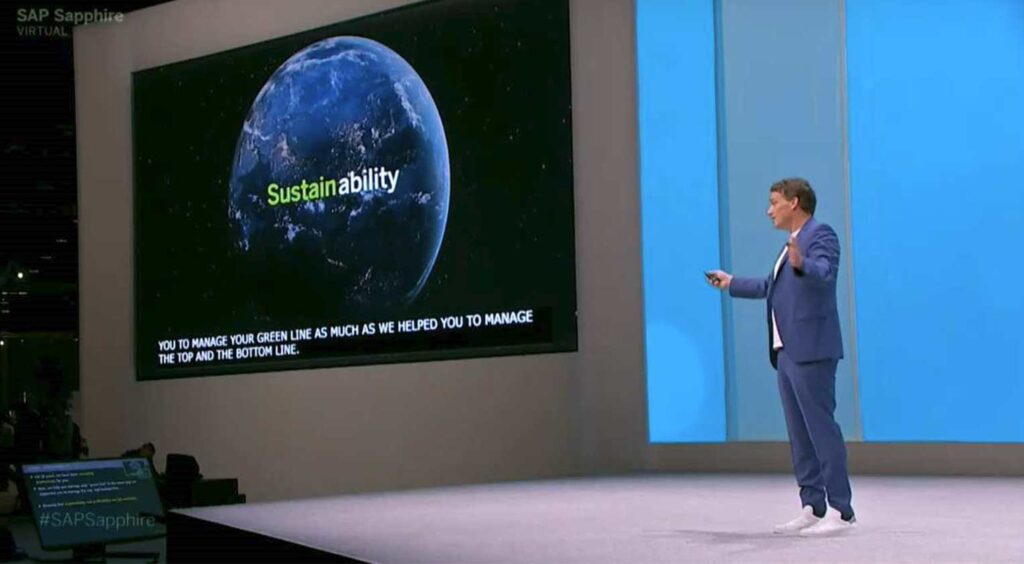Redwood’s Devin Gharibian-Saki shares his perspectives on success in digital transformation, SAP partnership and the future of AI in the endless pursuit of innovation and improvement.
With over 15 years of experience advising enterprises on digitalization, process improvement, process automation and operations, Devin Gharibian-Saki, senior vice president of business development and strategy at Redwood, spoke with ERP Today to discuss the company’s digital transformation success stories, its ongoing collaboration with SAP and what users should look up to in AI capabilities in the future.
Yoana Cholteeva (YC): Could you tell us a little bit more about your role at Redwood and your focus there?
Devin Gharibian-Saki (DG): On a day-to-day basis, I spend a lot of time driving our partnership with SAP from an executive perspective. But I also meet a lot of customers and help them build automation roadmaps and steer their transformation program from our point of view, which is process automation in the widest sense.
YC: Redwood Software has been recognized as an official SAP-certified integration recently. Could you tell me a little bit more about that development? And what does it mean for Redwood as well?
DG: First of all, it means a lot. I think Redwood’s been partnering with SAP for about 20 years now. It started in 2004 when ECC was introduced to the market. Since those days, Redwood has been the partner of choice for SAP when it comes to the topic of workload automation, also known as job scheduling, which is a type of software solution that orchestrates complex, long-running processes that are very critical. We automate specific transactions across that entire end-to-end process so that it runs as autonomously as possible. And that’s what we’ve been doing with SAP for the past 20 years.
When it comes to certifications, SAP’s technology is evolving. We now have S/4HANA enterprise and all the new cloud solutions that SAP offers. Because of that strategic alignment, we’re very eager to always stay up to speed with our certifications and we can testify that we support all the greatest and newest solutions that SAP is offering. We’re typically always the first ones to do that in our space and we are proud of that.
YC: To begin with your successful collaboration with Co-op, how did it start and what prompted it?
DG: The Co-op partnership goes back a long time already. We started our partnership in 2004 with SAP and at that time, we also had a product that was sold through SAP. Back then, Co-op had already purchased our solution from SAP. Everybody was on an on-premise setup at the time.
Now, in the last couple of years, we’ve built a cloud solution, a SaaS platform, which has the same functionality. As part of the Co-op transformation, we’re now moving it to our cloud platform. That in itself was a very easy transition from our perspective, but obviously, it’s also re-architecting its systems of record and moving to S/4HANA from its on-premise ECC. We helped it operate the critical core processes throughout the transition because it has parts of it still on ECC and then parts of it on S/4HANA. And because we coordinated these processes, we were able to help it secure the operations in that capacity.
That’s a very common theme that I see across a lot of our customers. They are moving to S/4, which is a multi-year project, so you need to touch every part of your application landscape and every process needs to be turned around. At the same time, you need to keep everything operational because otherwise, your business goes upside down. We play a role in connecting and orchestrating those critical business processes so that we can secure the operations at any point in time. And while sometimes it doesn’t look very sexy, it’s absolutely business-critical.
YC: Do you have other examples of where such orchestration was critical for customers?
DG: Another example is Stadtwerke München (SWM) in Germany. It is a local municipal energy supplier in the city of Munich. It was in a similar situation as Co-op – it’s been a long customer of ours and it has moved to our cloud solution as well in the interim. In that case, however, it was a different core process that we automated. It was the meter-to-cash process for utilities where you prompt the collection of meter reading information by sending invoices and collecting money from the end customers. That entire process is fully automated using SAP S/4HANA as a system of record and then our system on top of it coordinates all the individual transactions.
YC: Did you experience any challenges during the implementations?
DG: I think we had very few challenges in that capacity. The biggest challenge in these transformations is when the customer is questioning their actual business process. They have to think: “Do I continue to use this capability that I self-developed in my on-premise world? Can I go to this new standard functionality from SAP or Oracle? How am I going to do this – do I need to rebuild?” We have very little involvement in that because we are automating the business functionality once it exists.
For us, it’s mostly the question of understanding – does the customer already know what kind of process they want to do? What kind of applications will they be using? Will they be going to the cloud in the case of the start-up community? Will they be continuing to use RISE private cloud? Do they go to the public cloud? That’s the questions that we need to better understand and work with the customer so we can deliver end-to-end automation to their business.
YC: How do clients measure the success of the implementation outcomes? In terms of seeing positive results for the company?
DG: There is a multitude of ways of looking at this. First, if you think of these end-to-end processes, they typically have certain SLAs. Let’s take the meter to cash and the forecast and replenishment processes as examples. These are end-to-end processes, which involve several hundred individual steps and business transactions, but you need to perform them every day. Every day by six o’clock in the morning your forecasting and replenishment must be done because you want the items to be in your stores. So, our process outcomes are measured by certain SLAs in terms of the timely completion of these processes with full accuracy without interruptions and issues involved. If we can accomplish that over a certain period without issues, then that’s what is considered to be a success.
The secondary aspect is also how much manual work we remove from people who would have had to perform these transactions otherwise. That’s another point but it’s more of an efficiency angle rather than process outcome, KPI, if you will. So as an example, we have customers who started working with us and they didn’t have a dedicated solution for what we offer today. They used to have five to ten people manually performing these transactions which are now automated by our software. That saves time and these people can move on and do other critical IT projects. That’s also a benefit that customers measure in terms of what we bring.
YC: In terms of your collaboration with SAP, is this an ongoing partnership where you align your goals with it?
DG: Absolutely. That’s the biggest part of my job. We are working together to build specifications on how we improve our products from both sides. We also have a lot of joint customers that we want to serve in the best possible way. So, our customer success teams and their customer success teams work together a lot. It’s a very intense partnership and I’m stressing this because it’s also very strategic to us. Most of our customers who use us in the context of SAP expect a certain level of engagement from us. It is the criticality of the SAP and the ERP system justice, which is why we are investing so much time into that [partnership].
YC: Everybody is talking about AI these days – what updates can you share from Redwood’s perspective?
DG: I think AI is another automation endpoint for us. If you think of these big complex processes that are represented by ERP systems, they come with thousands of individual business transactions. And what SAP is now doing with AI is making that process a lot easier in every single business transaction. So, for us, AI becomes an accelerator to deliver the end-to-end business process outcome like a financial close. Instead of having to do more stuff to get a complete financial close automated with our software, which is based on SAP’s ERP system, we have less complexity to manage. We can also incorporate other AI tools into the end-to-end process.
For example, we had a case where a customer wanted to take an image and send it to AWS Textract. That image needed to be automatically analyzed in terms of what it represents. The output can be given back to our system and then our system takes the analysis of the picture and can decide to do something with it. It can maybe register the invoice in SAP or it can create a new employee record by running the respective transactions. This way, we are becoming the orchestration engine on top of AI. In doing that we amplify its value. Of course, we also think about AI ourselves in terms of how we can make use of it to improve our own technology – how can we make it easier to build automation or to find data in our system? We’re also doing that as part of our product development.
Additional reporting by Ekaterina Dudakova




